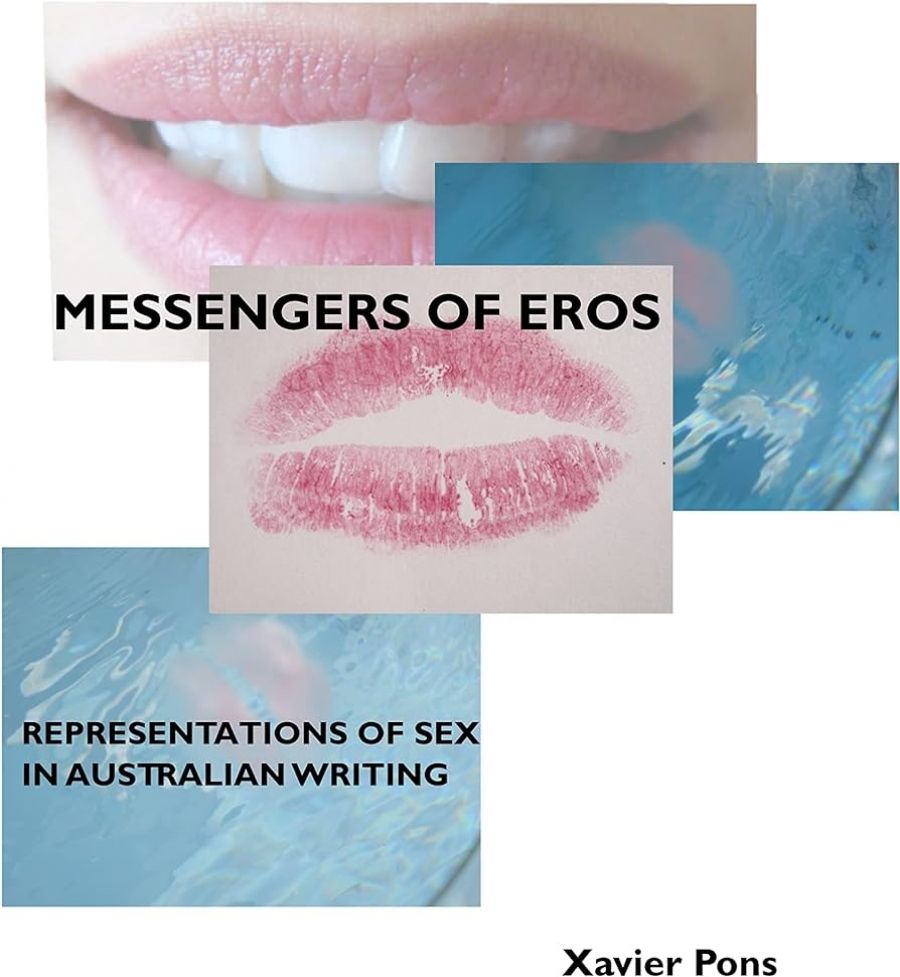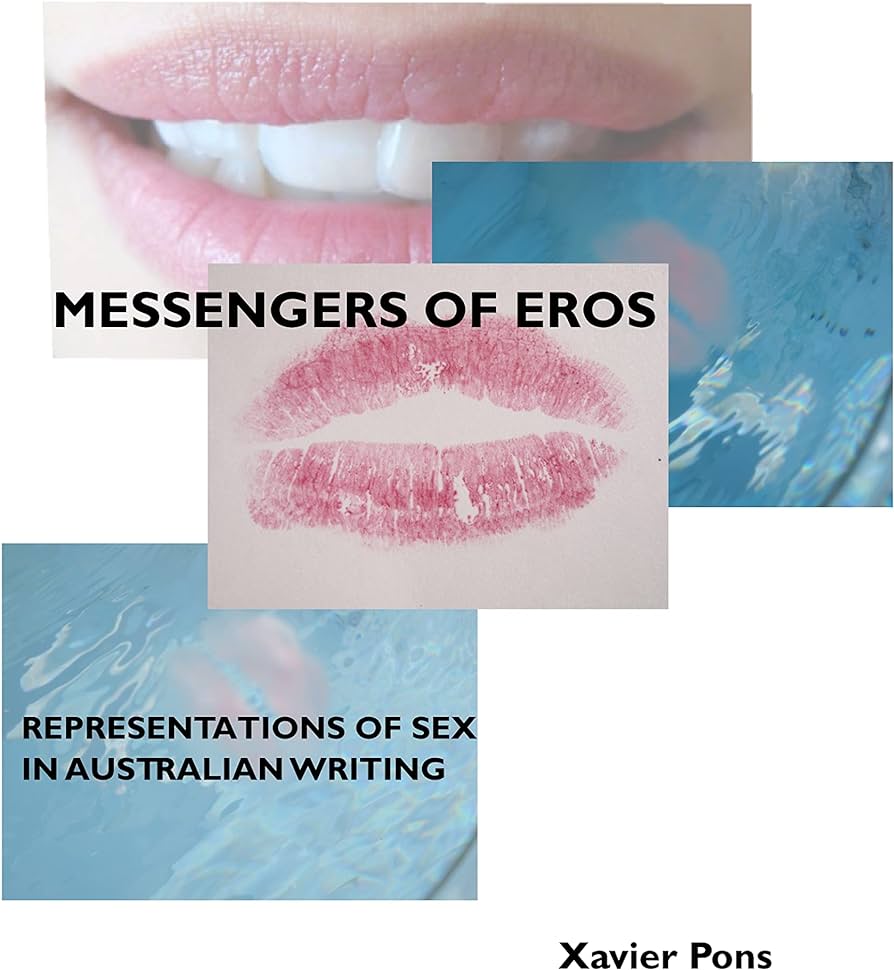
- Free Article: No
- Contents Category: Literary Studies
- Review Article: Yes
- Article Title: Bigger than God
- Online Only: No
- Custom Highlight Text:
Like the man with a hammer to whom everything looks like a nail, Xavier Pons knows what he is looking for in his monograph on sex in Australian writing, and makes sure he finds it. Pons, a lecturer in Australian studies at the University of Toulouse, is clearly expert in his subject, and renders his explorations lucidly, at times with great insight, and intelligibly to non-specialist eyes.
- Book 1 Title: Messengers of Eros
- Book 1 Subtitle: Representations of sex in Australian writing
- Book 1 Biblio: Cambridge Scholars Publishing, £29.99 pb, 361 pp, 9781443805230
- Book 1 Cover Small (400 x 600):

- Book 1 Cover (800 x 1200):

Nevertheless, the reader is asked to accept a number of first principles that could be questioned but that aren’t in this book. The scope of Pons’s book is deep rather than wide. While there is fleeting discussion of the heavyweights mentioned on the blurb – White, Carey, Flanagan, Prichard, Furphy, Herbert, Malouf (more than fleeting in his case) – Pons is mainly concerned, as the board of classification would have it, with sex. Consequently, the book reserves its most thorough exegeses for Justine Ettler’s The River Ophelia (1995), Linda Jaivin’s Eat Me (1997), Finola Moorhead’s Still Murder (1991), Christos Tsiolkas’s Loaded (1995), Rod Jones’s Nightpictures (1997), Andrew McGahan’s Praise (1992), John A. Scott’s What I Have Written (1993), Frank Moorhouse’s Forty-Seventeen (1988) and Fiona McGregor’s Suck My Toes (1994). In other words, this book could more accurately have been subtitled ‘Representations of Sex in Australian Writing that Wants to Represent Sex’. While Pons deflects any expectation of covering ‘the big picture’, confessing that he is only trying ‘to shine a light on some perhaps neglected corners of that vast construction site that is Australian literature’, his choice of mainly recent erotic fiction lends his arguments a certain circularity, as if a student of Australian sexuality decided to undertake all of his learning in Kings Cross.
The other assumption Pons wishes readers to share – and his book could be frustratingly narrow and self-absorbed if they elect not to – is that ‘More than God, perhaps, [sex] is the central mystery of our lives, and a never-ending source of curiosity’. This declaration is footnoted. The footnote contains a kind of evidence for such a sweeping statement, reading: ‘[A]s is attested to by the fact that the largest category of sites on the Internet has to do with sex.’ In an otherwise well-argued monograph, this is startlingly glib. The popularity of sex on the Internet means sex is ‘the central mystery of our lives and a never-ending source of curiosity’? Even more so than God? Where does God rank on Google searches?
The contrary view could be that sex, for a great many writers, readers, non-writers and non-readers, is neither interesting nor neglected enough to warrant urgent literary exploration. Pons asserts that writers such as Lawson, Furphy, Rudd and Franklin ‘mostly steered clear of the uncharted and presumably dangerous waters of sexuality’. Presumably dangerous? That is some assumption. Most writers give their characters a sex life (or a culinary life, or a sartorial life, or indeed an inner life) for the purpose of characterisation, or building dramatic action, or any number of other aims. Many, and very possibly Lawson, Furphy, Franklin and Rudd, ‘steered clear’ of sexuality not because it was dangerous but because it was uninteresting or unhelpful. What about the proposition that our sexuality is not the most interesting thing about us, but the least? I would have liked to see Pons examine some of the literature that takes that view. To see how sexuality is represented by novelists who purport to avoid it might be eye-opening indeed.
But if readers are to adopt such a querulous stance on the basic assumptions, they won’t have much of a future with this book. Within the limits of his solipsism, Pons has some interesting things to say. His chapters on interracial sex, concentrating on the works of white and then indigenous writers, are the book’s strongest, perhaps because the intersection of sex with politics, identity and Australian history can, in this realm, be taken for granted. Likewise, the accumulation of evidence on just how brutal and chauvinistic Australian men have been portrayed sexually in our literature is at one level startling, at another saddening. Pons’s examinations of Tsiolkas’s first novel, Loaded, and his third, Dead Europe (2005), show that, even without the focus on sexuality, Tsiolkas was a major Australian talent long before The Slap (2008). The extensive sampling of McGahan’s Praise is a reminder of what a very good novel it is. And the tireless references to Jaivin’s Eat Me and Ettler’s The River Ophelia tend to show that although the two erotic bestsellers might have been paired generically in the 1990s, the former is demonstrably the superior.
Messengers of Eros is best in the middle. The conclusion is limp: it’s not worth waiting 350 pages to discover that, measured against Ian Dury’s exhortation to ‘stick it where it hurts’, Australian writers ‘have acquitted themselves creditably’. But by his own admission, Pons is far more interested in the details than in the grand synthesis. Many of the writers studied will be intrigued to find an alert analyst uncovering for them what they really meant. Readers will find in this book an assortment of ideas, speculations and suggestions that may be the starting points for imaginative journeys into what could indeed be, for them, uncharted and dangerous territory.


Comments powered by CComment